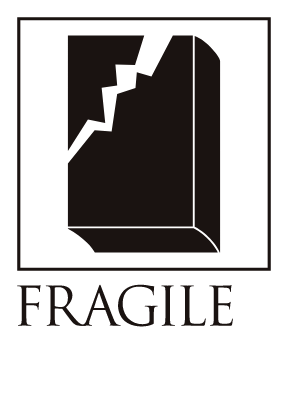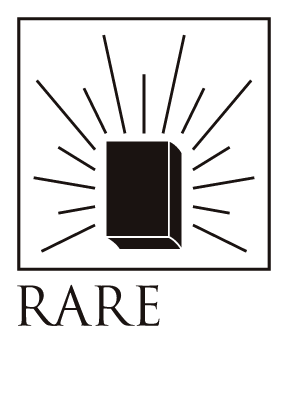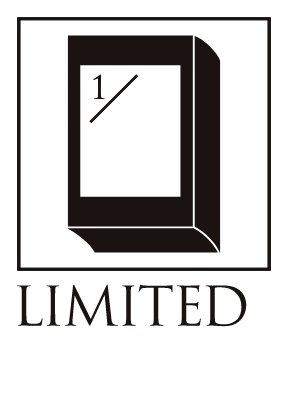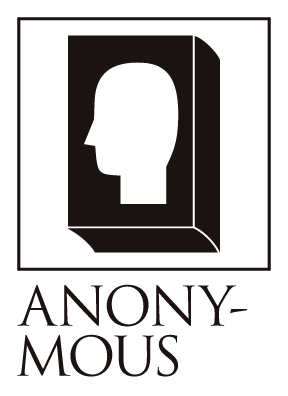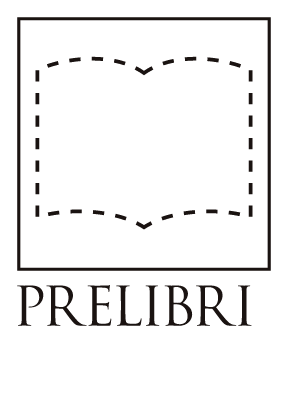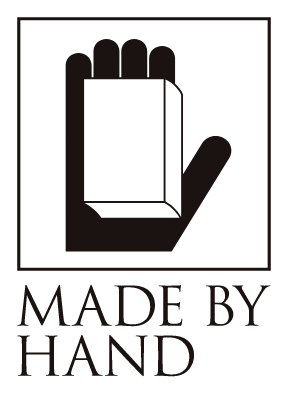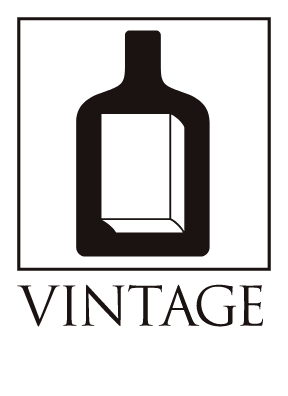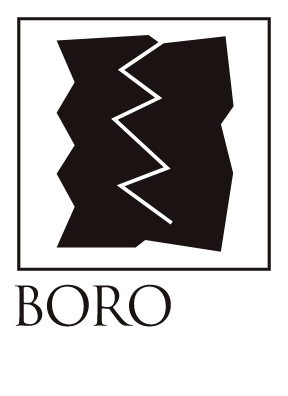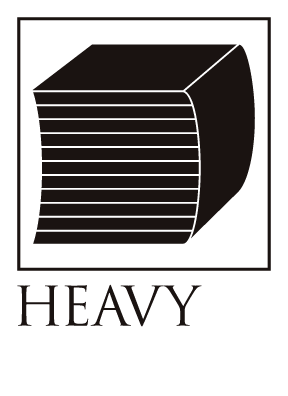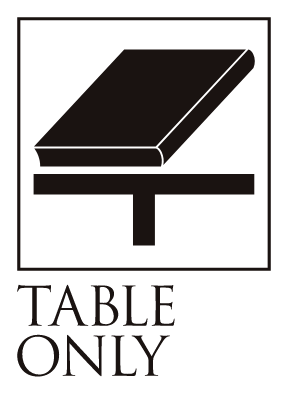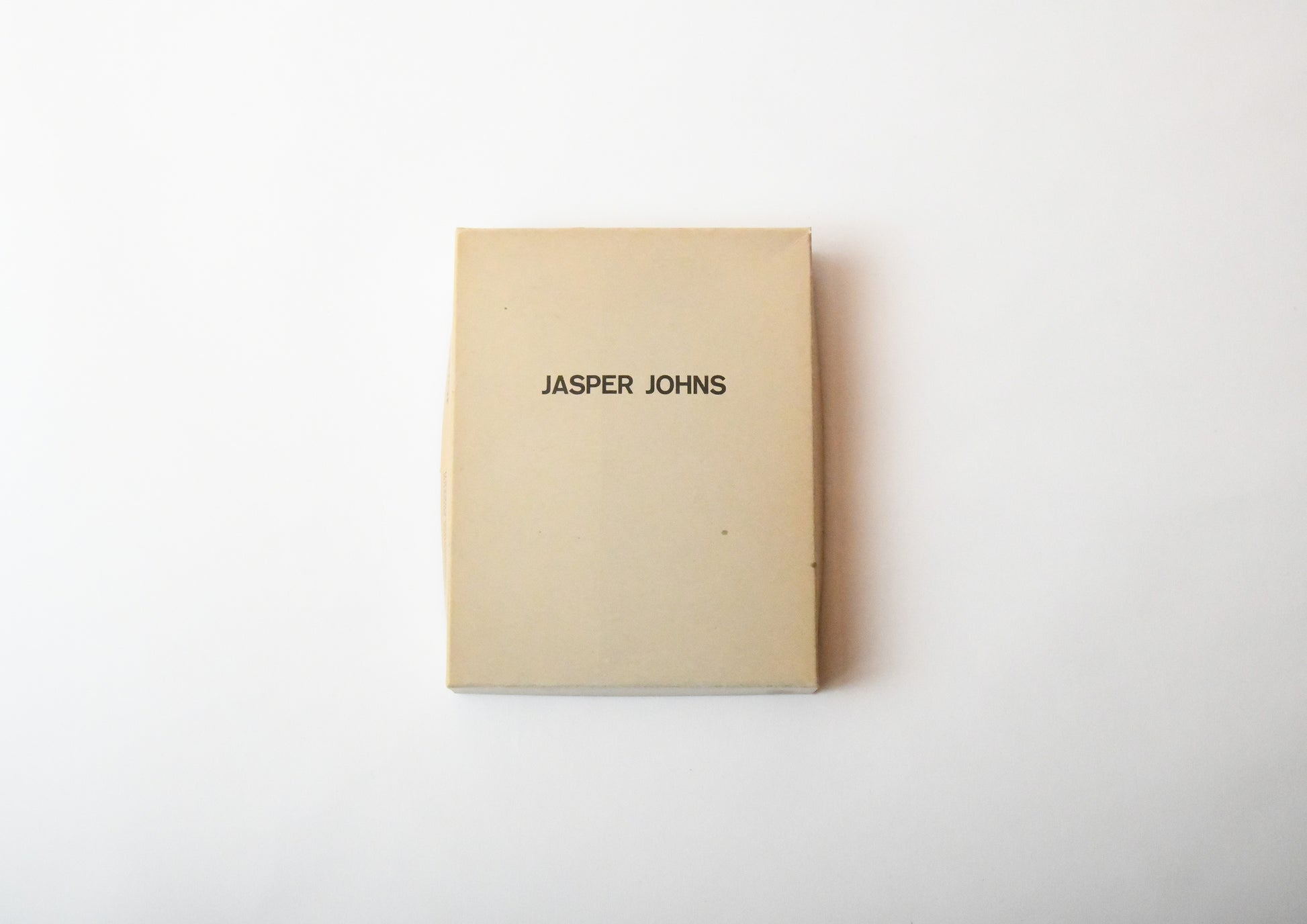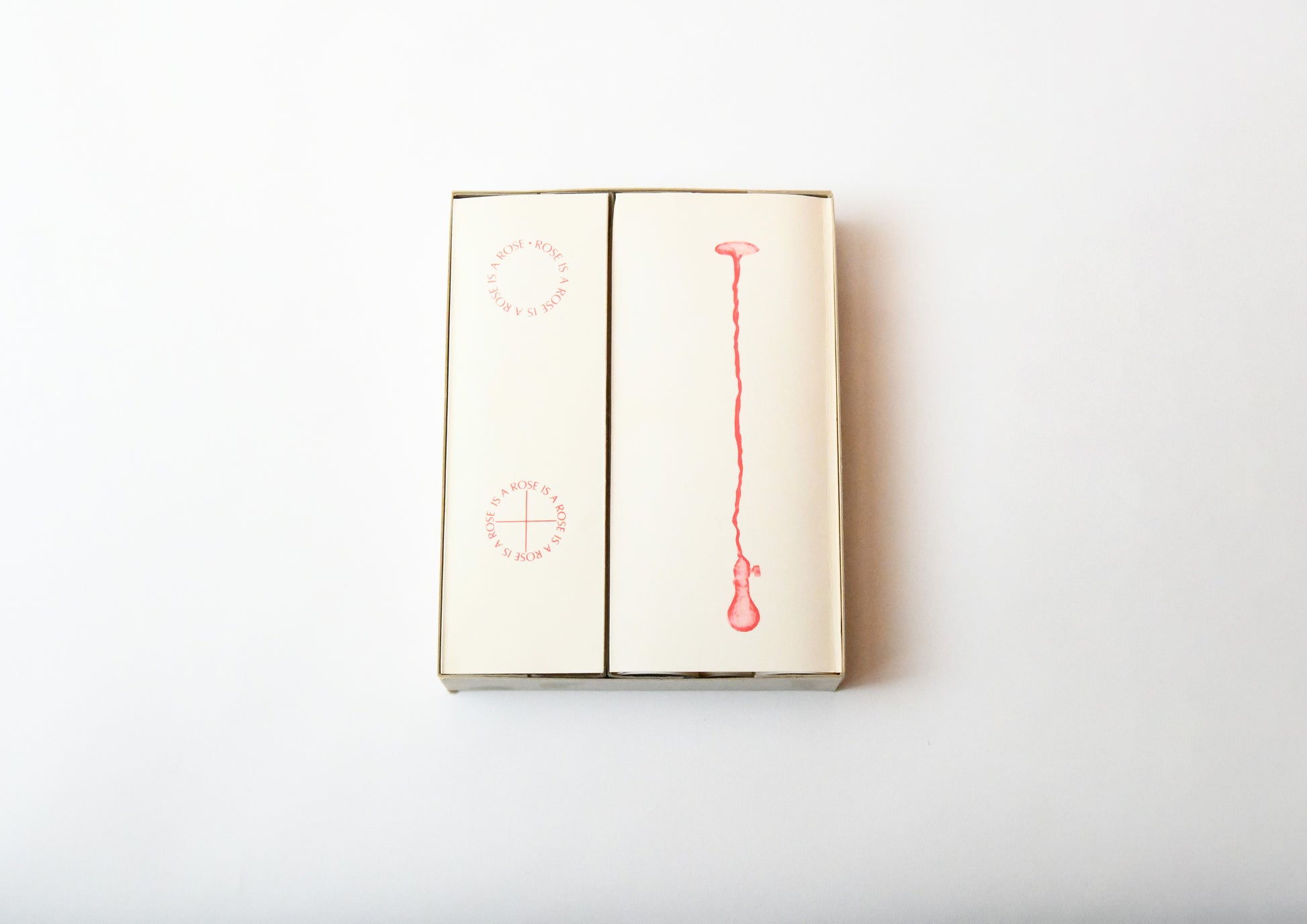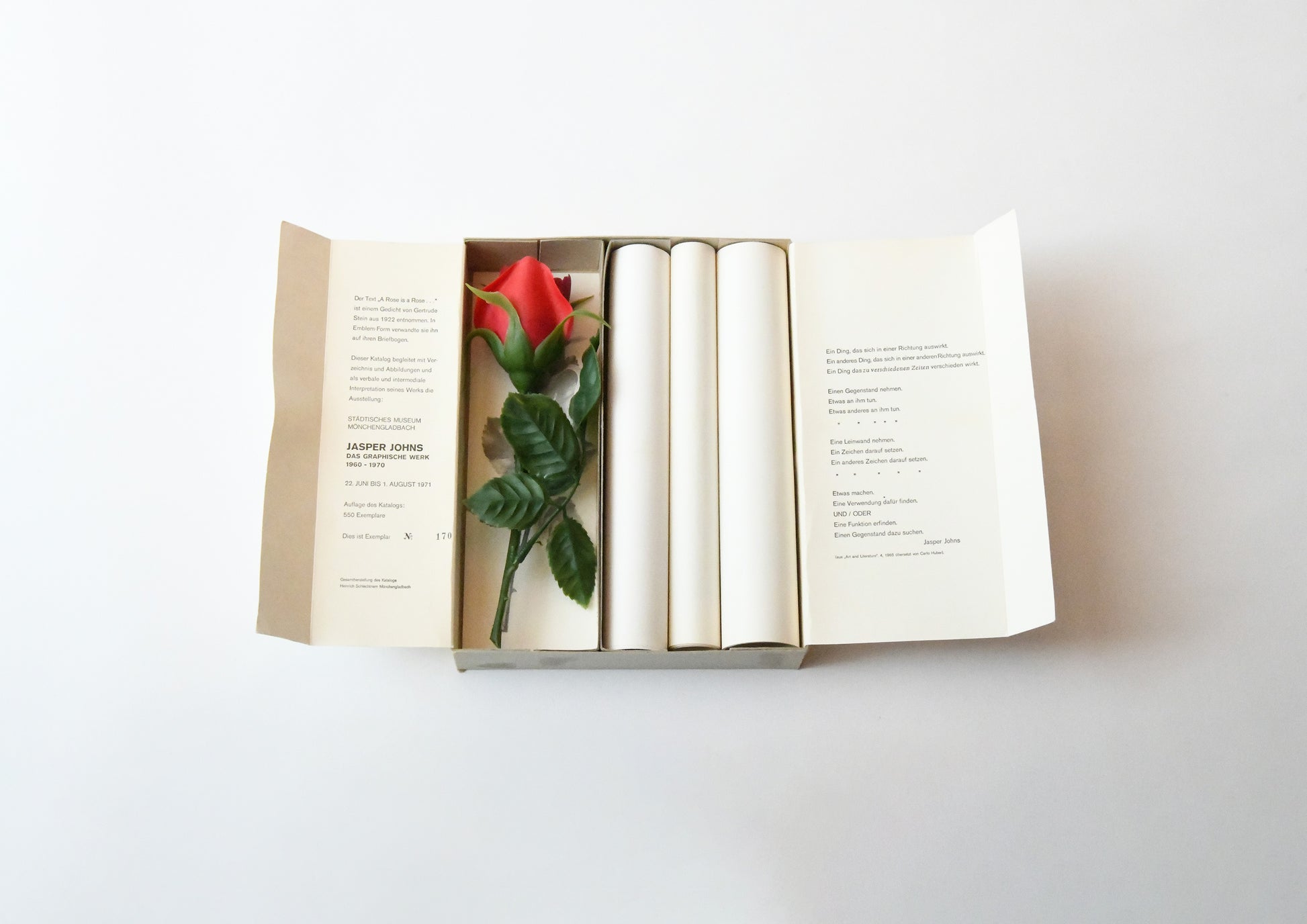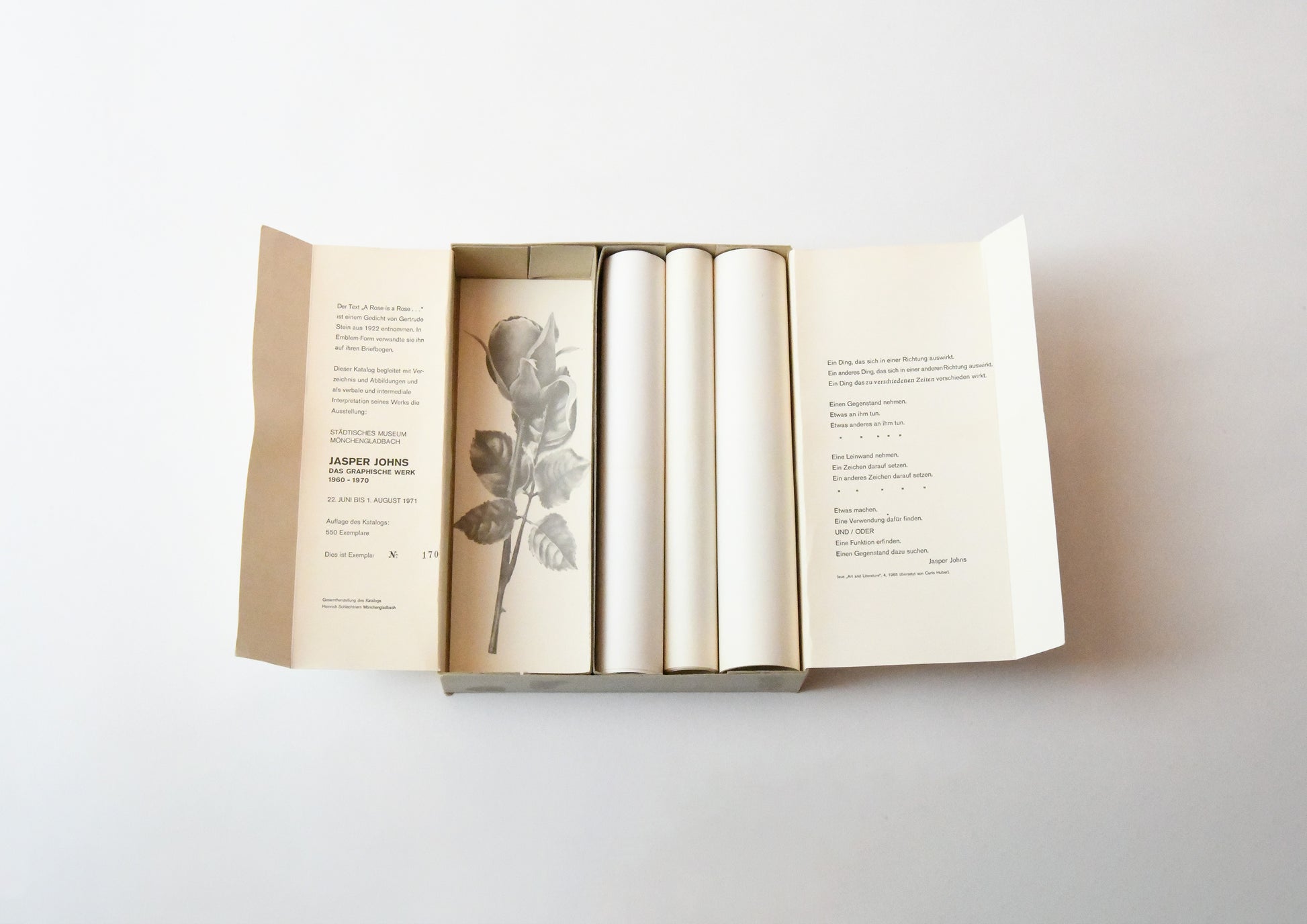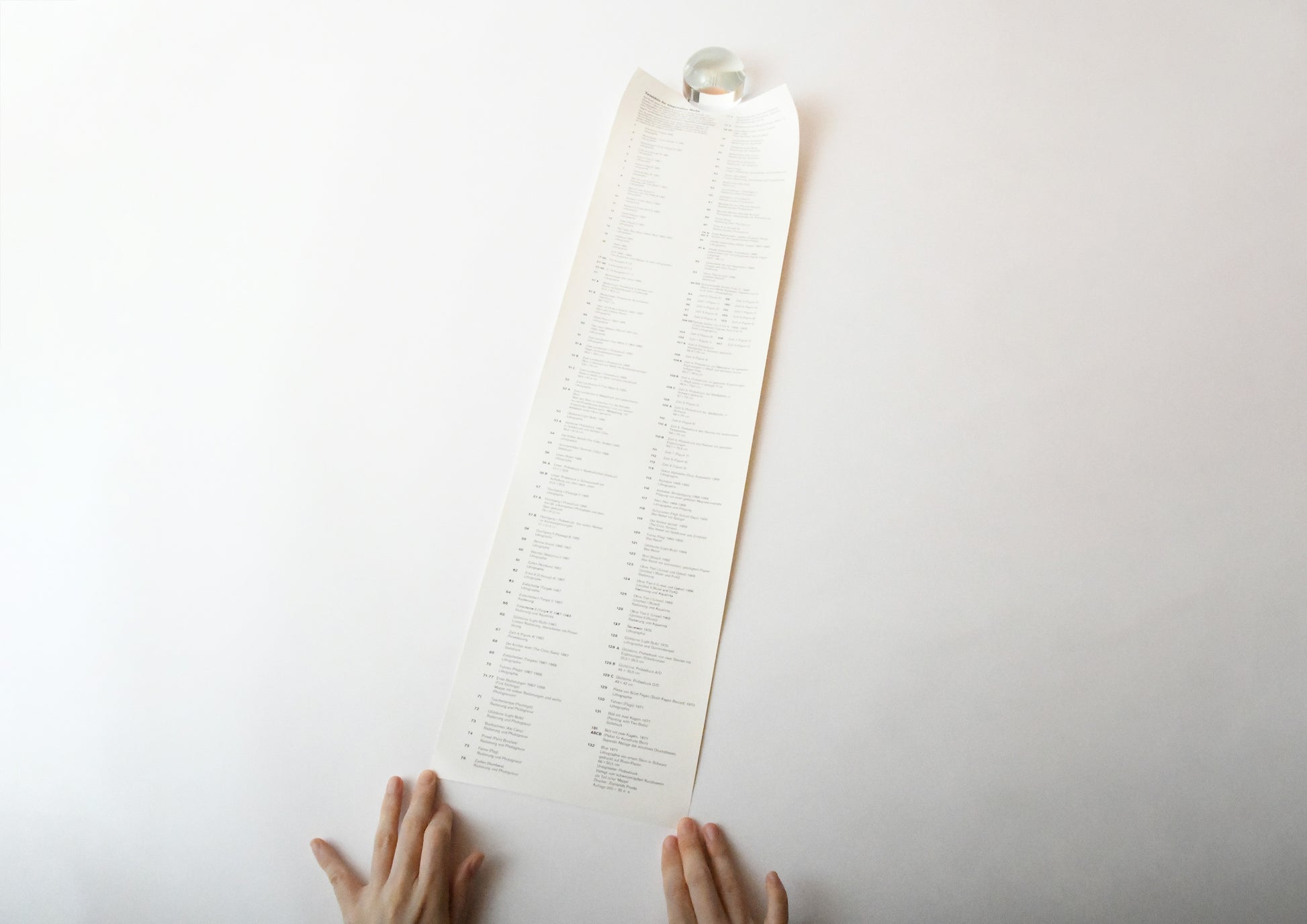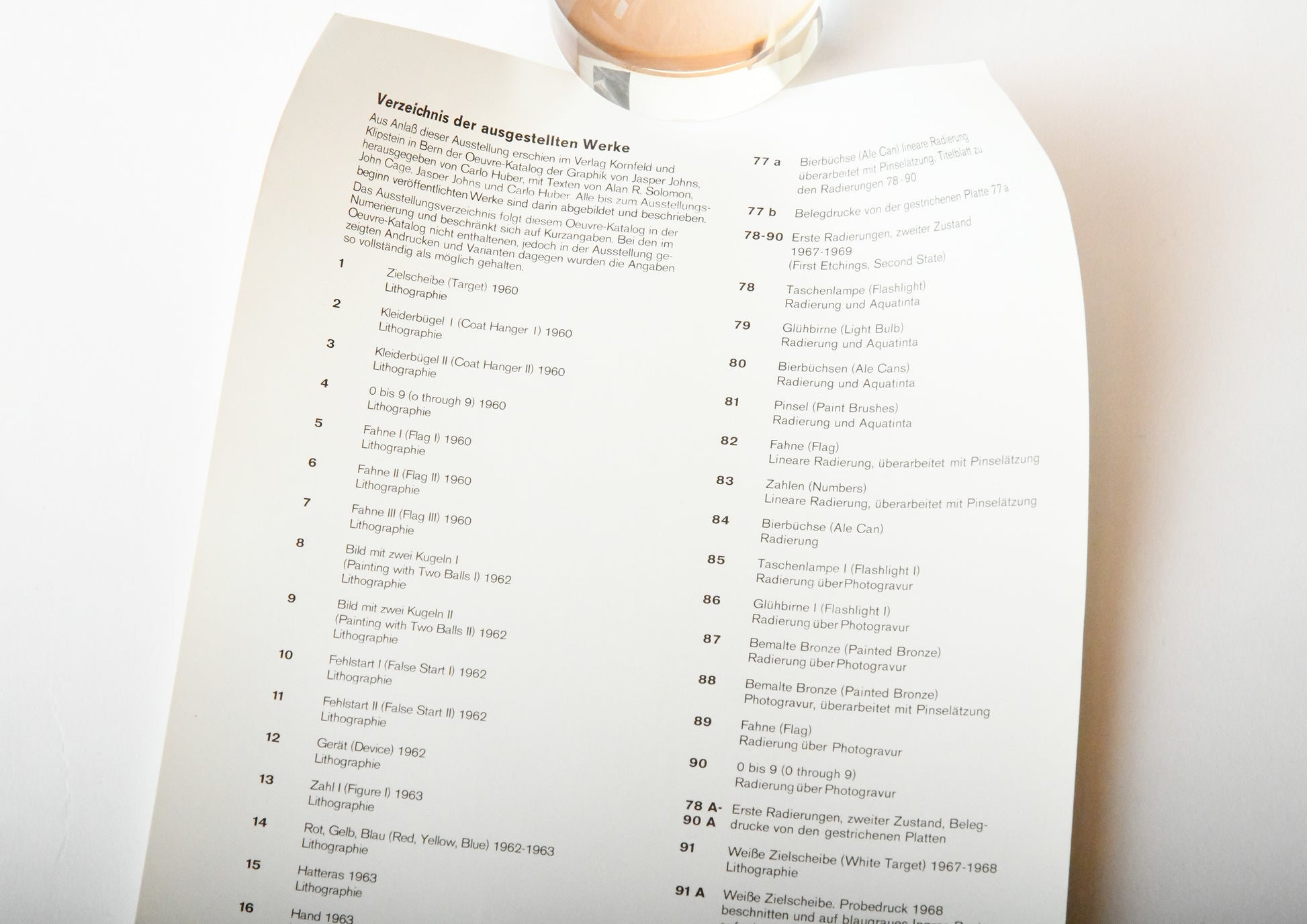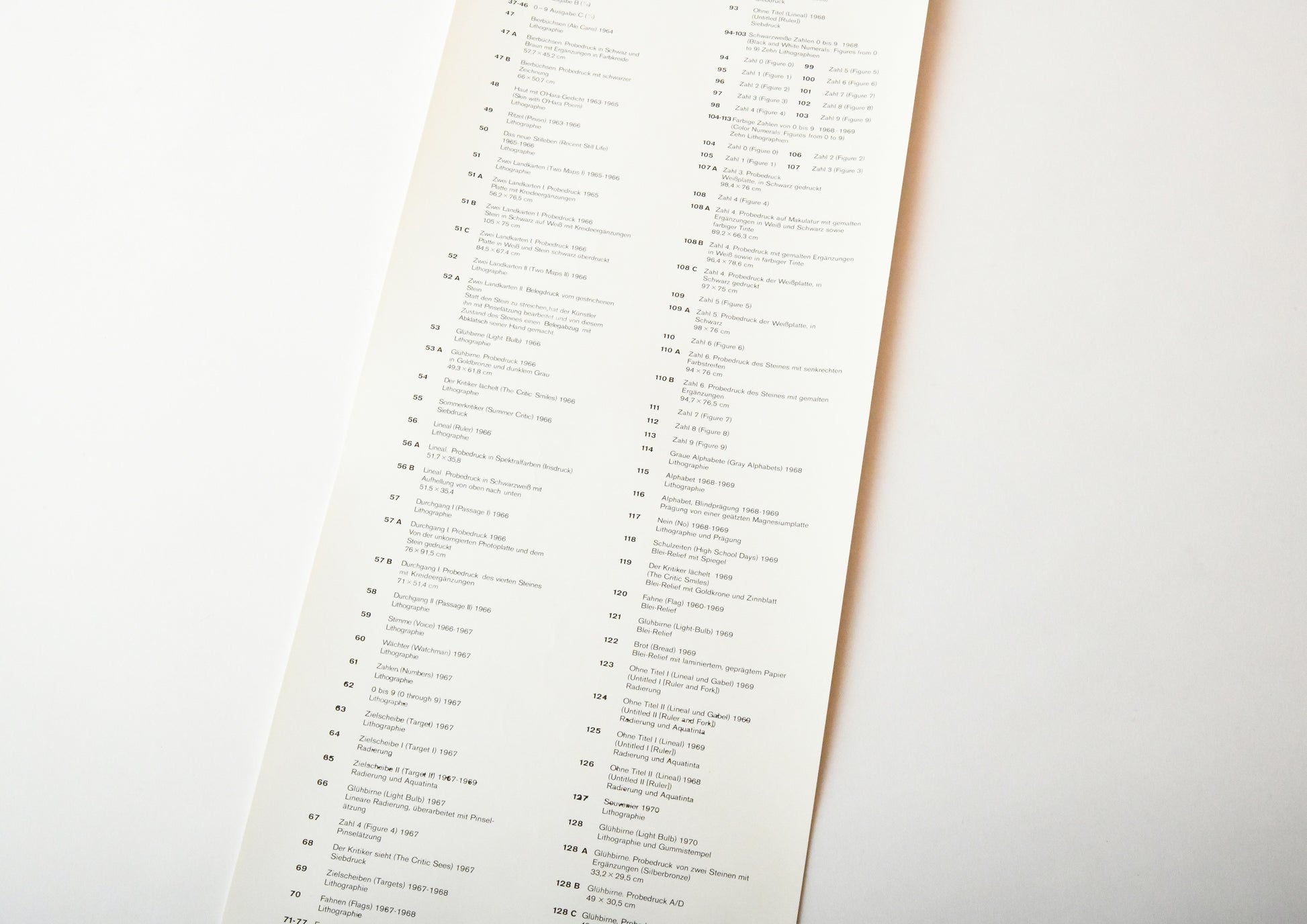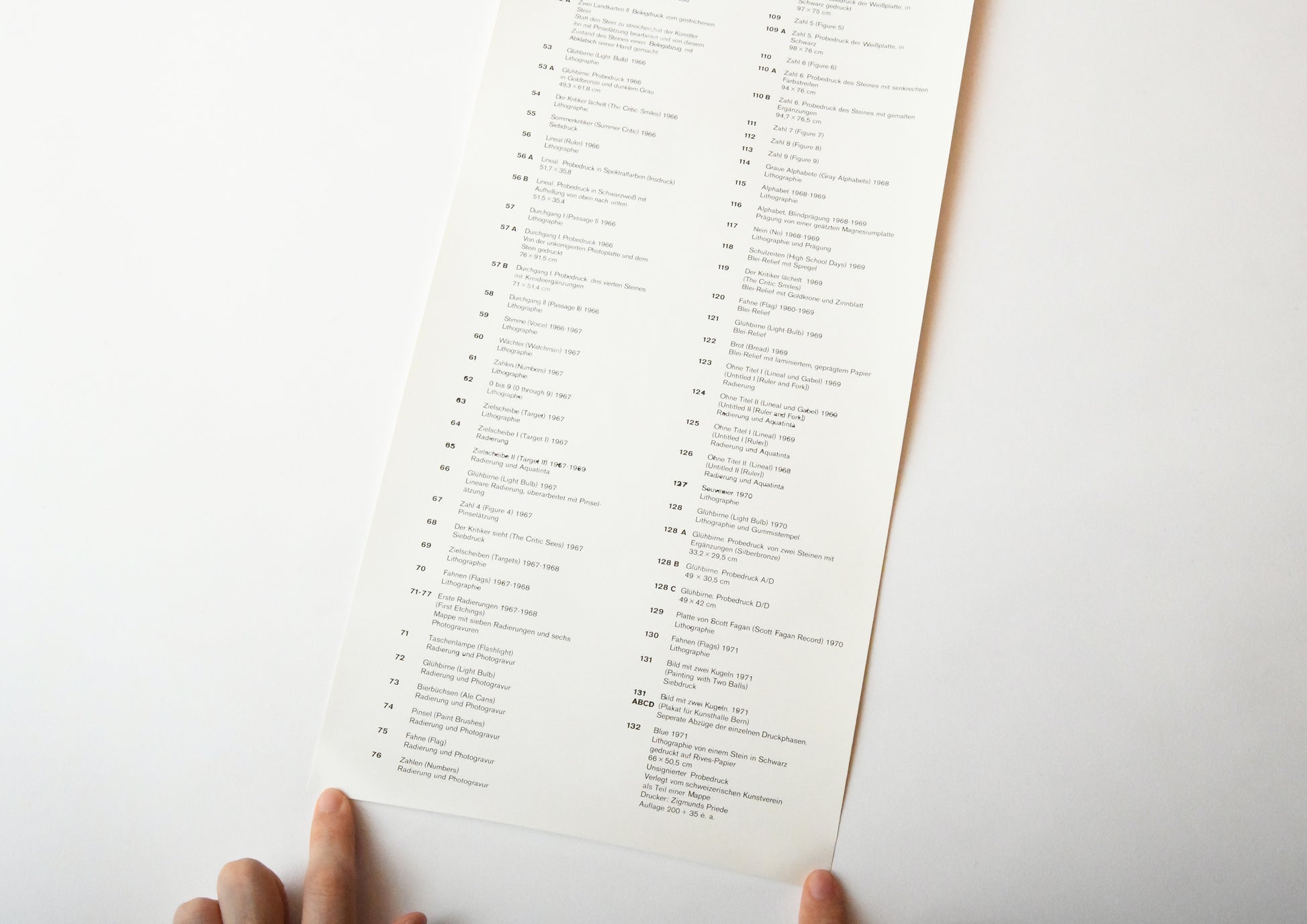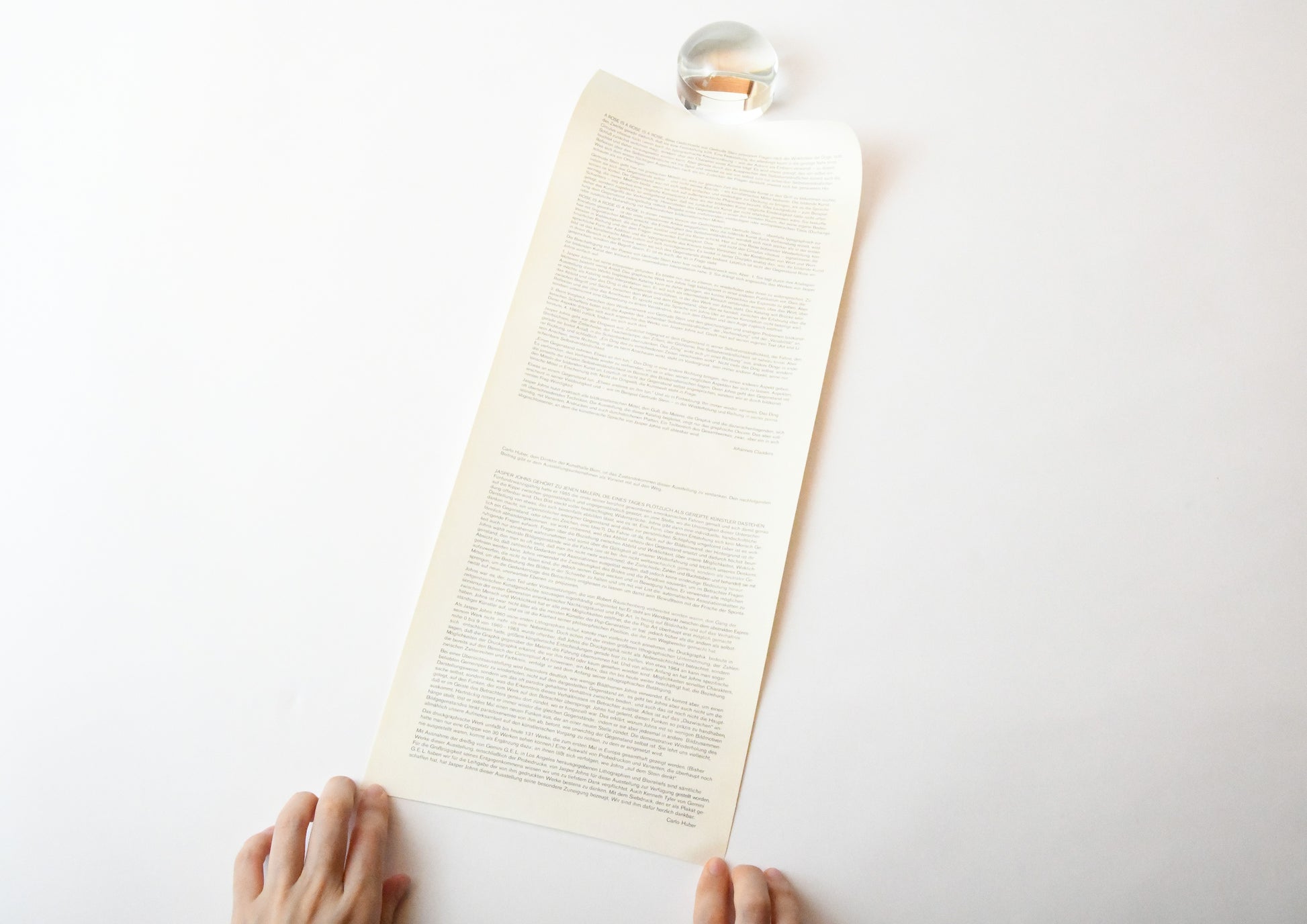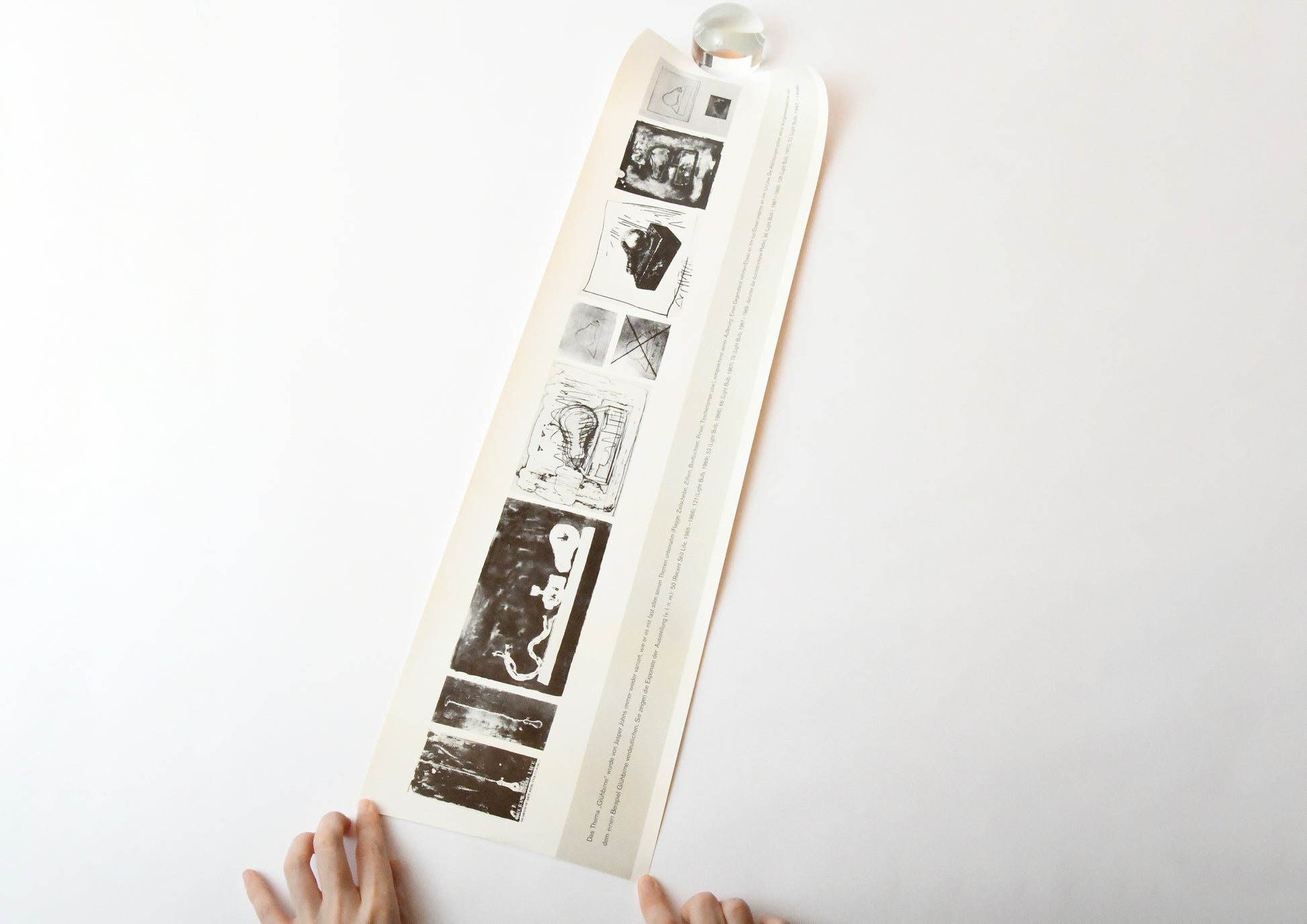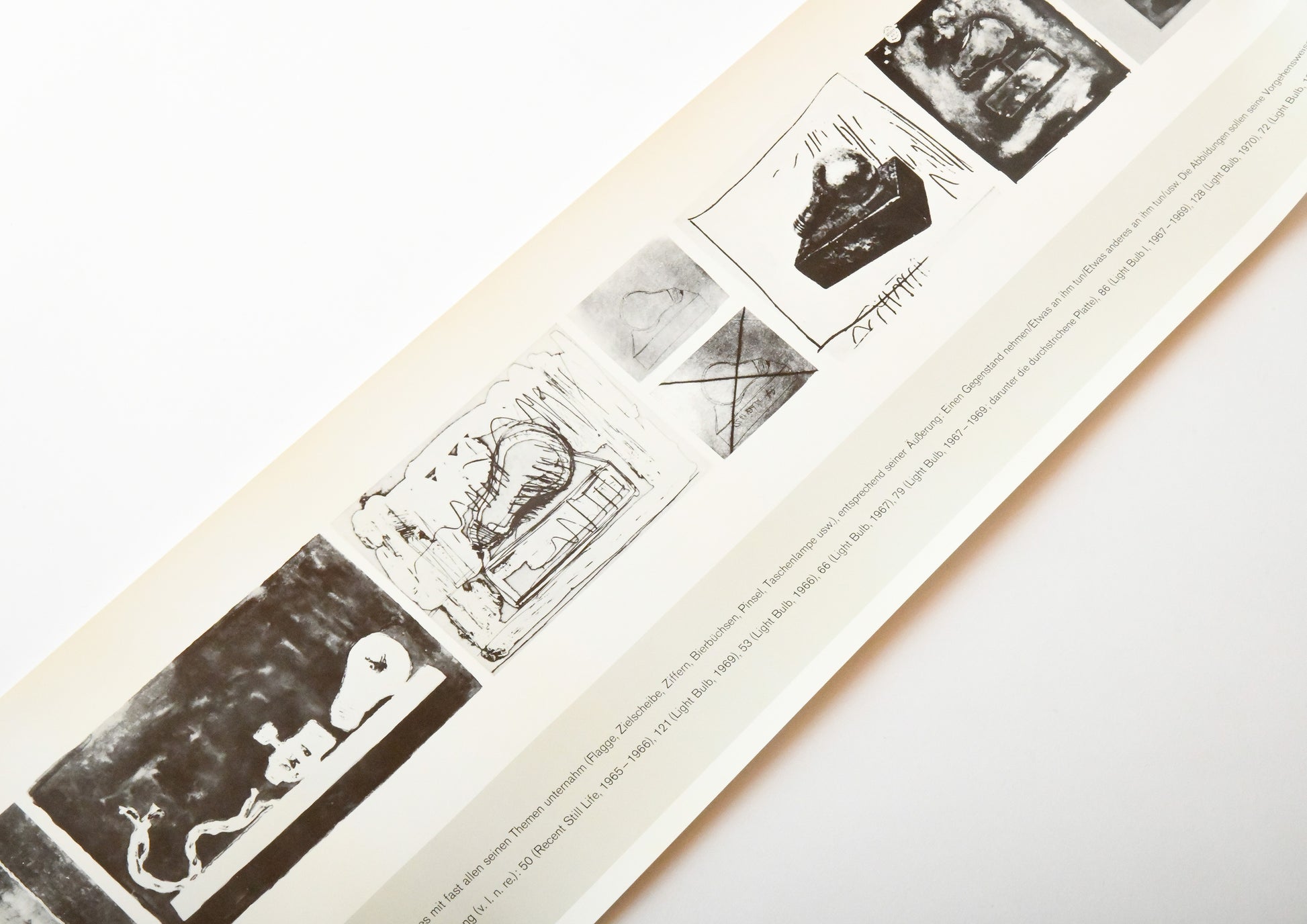A Rose is a Rose is a Rose is a Rose
Bibliographic Details
- Title
- A Rose is a Rose is a Rose is a Rose
- Artist
- Jasper Johns / ジャスパー・ジョーンズ
- Publisher
- Stadtisches Museum Mönchengladbach / メンヒェングラートバッハ市立美術館
- Year
- 1971
- Size
- w205 x h160 x d35 mm
- Weight
- 140g
- Language
- German / ドイツ語
- Binding
- original cardboard case / 専用の紙箱
- Edition
- Number 170 of a limited edition of 550 copies / 限定550部の内170番
- Condition
- very good
The special box contains a waxed plastic rose and three rolled scrolls inside. The first scroll contains a preface (in German) by Johannes Cladder, the curator of the exhibition, and a short essay by Gertrude Stein on the poem "A rose is a rose is a rose is a rose" (which is also the title of the book), the second scroll contains a list of 131 works of the exhibition, and the third scroll contains a banner advertisement for Jasper Johns' "Light Bulb" works.
The German museum
Published in place of an exhibition catalogue
A work of art to take home.
The books in this box were published in 1971.MonchengladbachThis is a catalogue and multiple work produced for the Jasper Johns exhibition "Das graphische werk 1960-1970" held at the Municipal Museum of Art. It is unclear whether it is a book or not, but for Fragile Books, which introduces books that are less than a book but more than a book, it is a historic gem.
The contents are:Contains a waxed plastic rose and three scrollsThe first page of the scroll is by Johannes Bürger, who curated the exhibition.To the CrudderThe first page contains a preface by Robert G. (in German) and a short essay on Gertrude Stein's poem (A Rose is a Rose is a Rose is a Rose). The second page contains a list of 131 exhibits, and the third page is a banner advertisement for Jasper Johns' "Light Bulb" work. The title of the book, "A Rose is a Rose is a Rose is a Rose", is a quote from Gertrude Stein's "Sacred Emily" (1913),Translated into Japanese, it becomes the poem "A rose is a rose is a rose.".


Jasper Johns exhibition title:Das graphische werk 1960-1970 (This book was published as a catalogue and multiple for the exhibition "Graphic Works 1960-1970"."A rose is a rose is a rose is a rose." This book seems to deviate from the usual "exhibition catalog" or "picture book" that usually exists as a supplement to the main exhibition. Is it okay for it to exist so independently?"Is that so? It has nothing to do with the contents of the exhibition." Such reasonable criticism is ignored in the end, showing the artist's outstanding planning ability.
This box of books, locally known as "Box Catalogues" (commonly known as Kassetten),Including this book by Jasper Johns.During the 11 years35 booksMonchengladbachFrom the Municipal MuseumIssued.The key person is the library's director, publisher and producer, Johannes Kladas.
Cruddas was a pioneering curator who explored a new style of museum. In 1968, in his essay "Anti-Museum," he declared that the ideal museum of the future was to "remove physical walls and build a spiritual home." In other words, it is not "art" because it is placed in an authoritative building,I wanted to find the true value of art in communication with people.He even began to think that museums were in fact a hindrance. After that, Cruddas spent a long time practicing his "anti-musuem" project.
In 1967, Kladders became director of the Mönchengladbach Municipal Museum (now the Abteiberg Museum) in Germany.Raising the flag of "anti-museum"I organized my first exhibition. It was Joseph Beuys' first solo exhibition at a museum. Beuys was a military veteran, 46 years old at the time, and was a professor of sculpture at the Düsseldorf Art Academy, the same school that produced Gerhard Richter and Anselm Kiefer, and was still unknown as an artist. What's more, Beuys had abolished the entrance exam and was on the verge of being fired from the school for adamantly insisting that he would accept all 142 students who could not get in because of the quota into his class. In any case, it was a time when he was not yet considered one of the leading artists of the 20th century.
After many twists and turns, Beuys' exhibition was decided, but the city museum did not have the budget to make a special catalog, and all they could do was a small, ordinary pamphlet printed on the cheapest paper. So Beuys, who had presented a boxed work at Edition Rene Block the year before, came up with the idea of a highly experimental hybrid publication that mixed an exhibition catalog with a multiple work. A multiple is a "mass-produced artwork" as opposed to an original work that only has one, and became popular after Fluxus presented it in various ways in the 1960s. Thus, together with Beuys, the Mönchengladbach City Museum's legendary publication "Box Catalogues" (commonly known as Kassetten) was born, and a total of 35 limited edition boxes were published one after another over the 11 years from 1967 to 1978, when Kladdas was the director.
This is the 14th "Box Catalogue" in the series, and other box books were published with a distinguished lineup of artists who would later be recognized as some of the most influential artists of the 20th century, including Joseph Beuys, Bernd and Hilla Becher, Marcel Broodthaers, Hanne Darboven, Piero Manzoni, and Gerhard Richter.
It is also an independent art project in itself.This box catalogue hardly meets the requirements for an exhibition catalogue. Some of the boxes even don't mention the exhibition at all.Being able to experience art anywhere, whether outside of a museum or at home,The "anti-museum" practiced by CruddasIt is perhaps the most symbolic expression.
Reference books:
Die Kassettenkataloge des Städischen Museums Mönchengladbach 1967-1978
In 2018, the Abteiberg Museum held the exhibition "From Then On: Rooms, Works, and Recollections of the Anti-Museum 1967-1978", and the first comprehensive catalogue of this unconventional exhibition was published.
Text by Osamu Kushida
